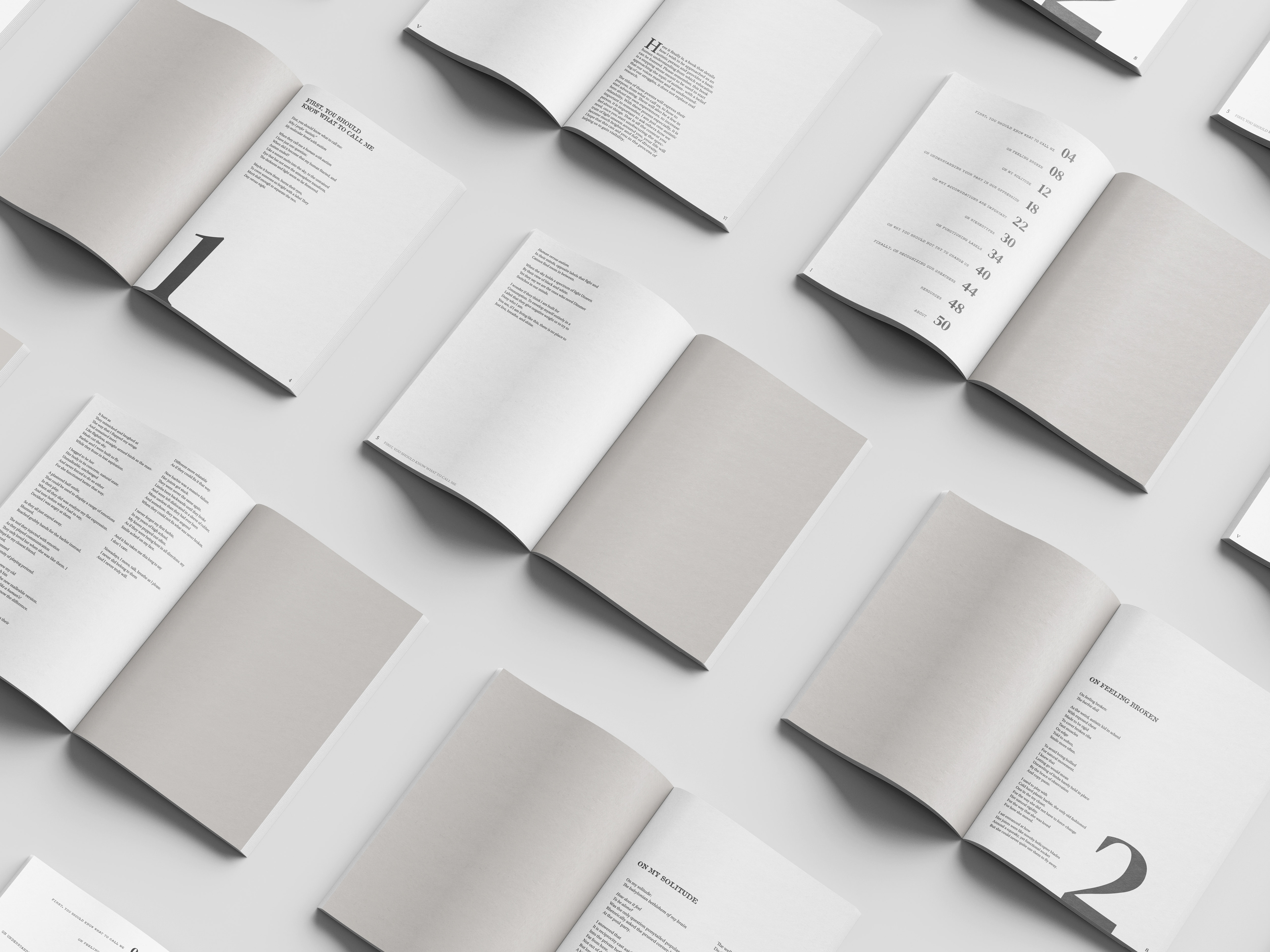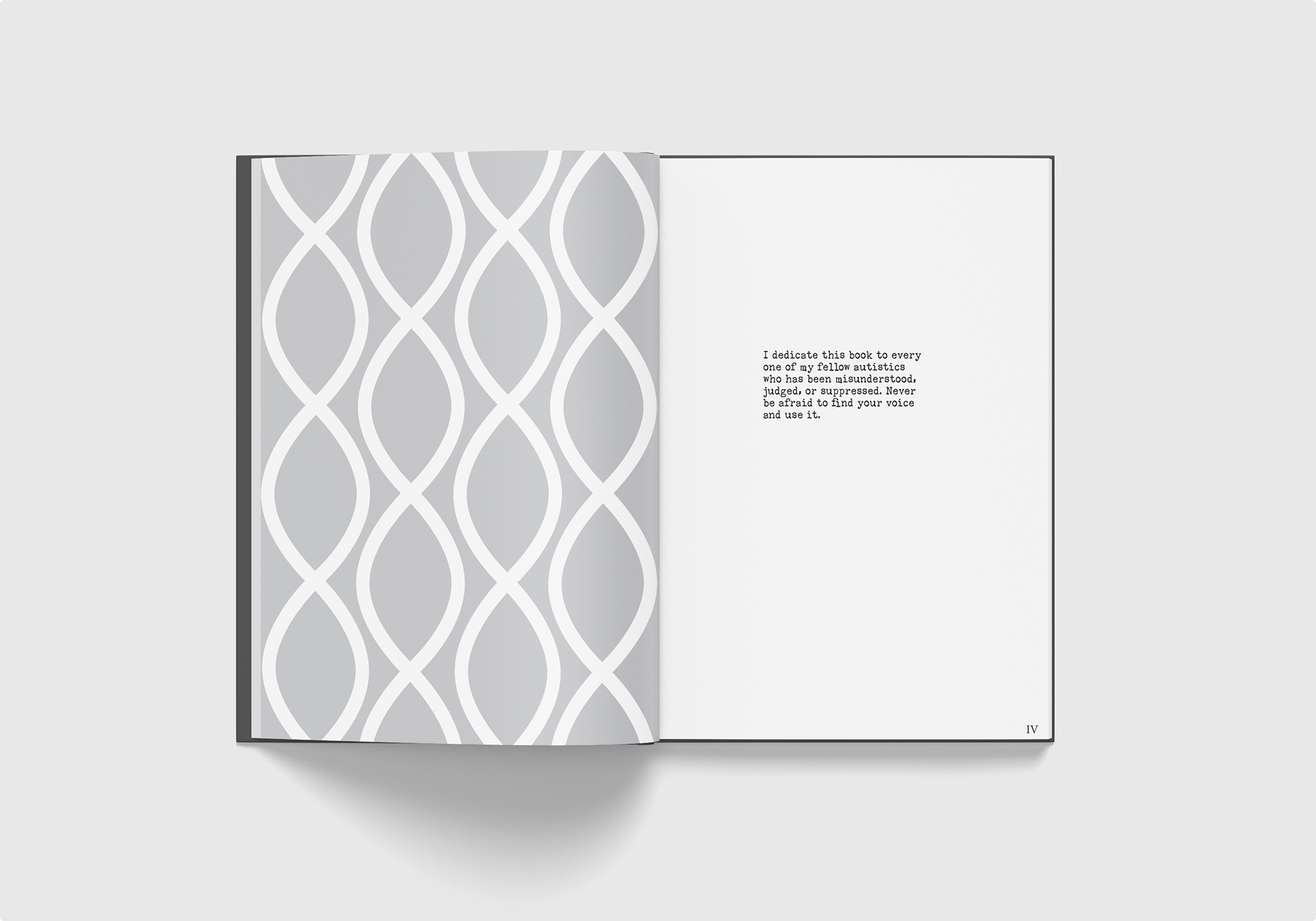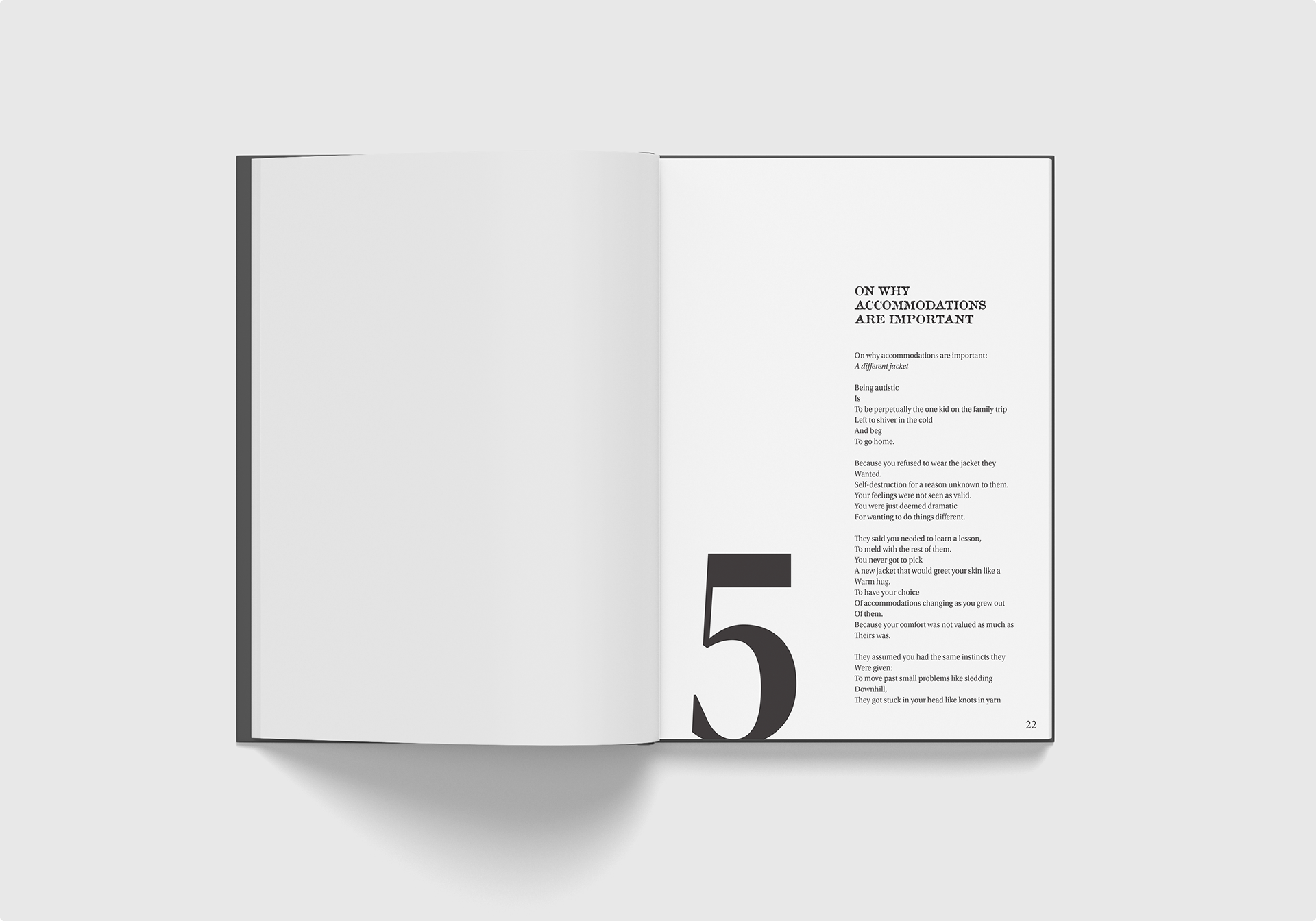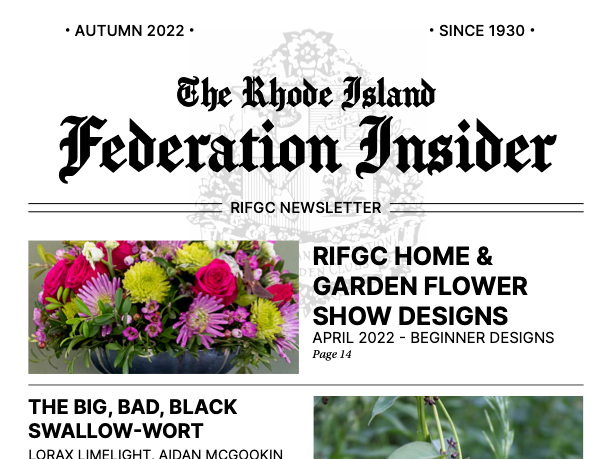In an interest to continue practicing publication design skills, I challenged myself to typeset and redesign a book of poetry a friend of mine has just released. I kept the book as simple as possible, I wanted the subject matter to be the main focus, so I used design elements that brought the reader’s attention back to the words on the page. I used high contrast to create a distinct type hierarchy and a more formal layout pattern to drive the book along without offering distractions along the way. I used transparent tracing paper to break chapters, this was to reflect the authors experience of feeling like they’re invisible to the neurotypical public, and also as a reflection of how I want neurotypical readers to take in the content, without opaque assumptions and perceptions. I kept the colors monotone and the textures uniform so as to not distract the reader and to avoid upsetting sensory touch reactions from autistic readers.
The design process revolved around a very big challenge. My style is usually aimed at organic and nature-themed, but the subject matter of the content meant that I would be barred from taking my usual route. The author is autistic, and his words demonstrate his experience in a society that turns a blind eye to the austic community. I’m not austistic, and through conversations with the author, it was clear that many of the ways that autistic people experience stimuli and triggers is exactly opposite to my own. Not only would I have to keep those things in mind when designing the book, I also had to remind myself that my usual style may be more detrimental to an autistic reader. I had to be mindful of colors, textures, visuals, and layout in order to present the content in a way that kept the audience in mind, didn’t distract from the content matter, and helped to convey the solemnity of the author’s words to readers who couldn’t personally relate. Making something so opposite to my normal style helped to broaden my design skills and pushed me to think differently.








